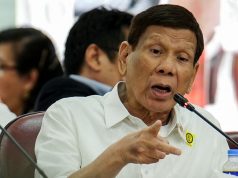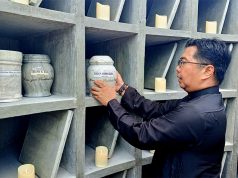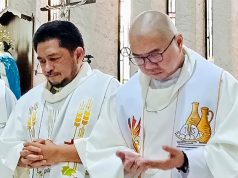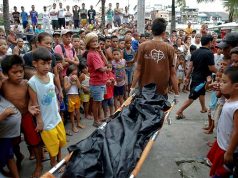
QUEZON CITY, Philippines – The police who burst into Kathrina Polo’s house on a rainy night in August 2016, then shot her husband in the head and heart, spoke a language she recognized but didn’t understand: Visayan.
It’s a common language in the southern Philippines. But in Polo’s poor neighborhood in Quezon City, hundreds of miles to the north, Visayan is rarely heard. “The police kept talking in Visayan because they knew I didn’t understand,” she recalled. Their use of Visayan was a clue to the identity of her husband’s killers.
The officers belonged to what would become the deadliest police station in Quezon City Police District. Called Station 6, or Batasan Station, it is on a violent frontline in President Rodrigo Duterte’s war on drugs.
Of the 12 police stations in Quezon City, which is part of Metro Manila, Station 6 was by far the most lethal. Its officers killed 108 people in anti-drug operations from July 2016 through June 2017, the campaign’s first year, accounting for 39 percent of the city’s body count, according to Quezon City Police District crime reports reviewed and analyzed by Reuters.
Almost all of these killings were carried out by Station 6’s anti-drug unit, the reports show. The officers who formed the core of that unit hailed from or near Davao, the southern hometown of President Duterte. They called themselves the “Davao Boys” – and spoke in the region’s language, Visayan.
There were 10 of them, their boss, Lito Patay, told Reuters. He took command of Station 6 in July 2016, shortly after the start of Duterte’s drug war. Patay is also from Davao, where he once led a paramilitary police unit. Asked about Station 6’s high death toll under his command, Patay said his officers only killed armed suspects who fought back. “I don’t feel bad because we are just defending ourselves,” he said in November. “We always follow the rule of law.”
Patay said the men previously served under him in Davao, but declined to identify them. But eight of the Davao Boys’ names appear on a police transfer order which one of them posted on Facebook. Those names matched the Quezon City crime reports reviewed by Reuters. The reports showed that this small group of men was involved in more than half of Station 6’s drug-related killings, 62 out of 108 deaths, including the three operations with the highest body count.
Only one of the officers, Charles Owen Molinos, agreed to be interviewed by Reuters. When asked what was so special about Davao cops, he smiled and said: “Special kill skills.”
Reuters spent four months retracing the Davao Boys’ deadly path through Quezon City, speaking to scores of police officers and bereaved families and analyzing thousands of police crime reports covering the first year of the drug war. These reports don’t specify which officers pulled the trigger but usually name officers who took part in an operation. After arriving in Quezon City, the Davao Boys were quickly involved in dozens of kills in what police described as legitimate drug busts, but relatives, human rights monitors and lawyers say were often executions.
What emerges is an intimate portrait of how a secretive anti-drug unit mobilized and killed – then vanished to await new orders.
The story of the Davao Boys also highlights a larger dynamic: Many of the drug war’s key police officers hail from or served in President Duterte’s hometown, where the campaign’s brutal methods originated during his time as mayor.
A Davao-based human rights group, the Coalition Against Summary Execution, blamed death squads in the city for 1,424 murders there between 1998 and 2015, mostly of petty criminals and drug users. Duterte, who was mayor for much of that period, denied any involvement.
At the time of publication, Duterte’s office and the Philippine National Police had not replied to questions from Reuters.
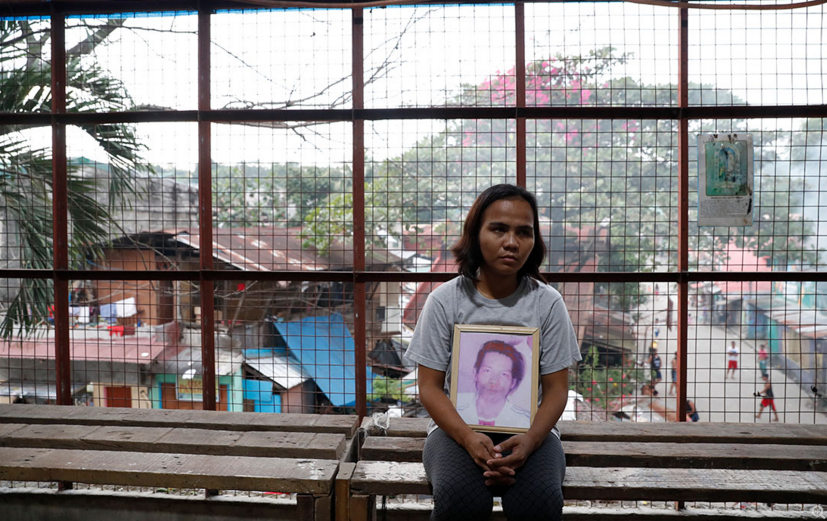
The most prominent police officer from Davao is Ronald Dela Rosa. When Duterte became president in June 2016, he appointed Dela Rosa as his national police chief and gave him free rein to roll out Davao’s crime-fighting model across the Philippines. “He is leaving everything up to me,” Dela Rosa told Reuters at the time.
Since then, police say they have killed almost 4,000 drug suspects, all of them in self-defense. Human rights activists blame police for thousands more killings attributed to vigilantes, but police deny any involvement in those deaths.
Dela Rosa was helped by officers he knew and trusted from Davao – among them, Lito Patay. Dela Rosa handpicked Patay to run Station 6 in Quezon City, Dela Rosa’s brother Ruel told Reuters. Dela Rosa and Patay are champion marksmen who first got to know each other at shooting contests, Ruel and Patay said.
Like Dela Rosa, Patay has a reputation among police as an officer who loves action – he was shot in the arm in 2008 while fighting Communist rebels – and hates drugs. “We are very angry about people involved in drugs,” Patay told Reuters, raising his voice and spitting out the words for emphasis. “We want to crush them. That’s our indoctrination.”
Local officials in Quezon City point out that Patay’s surname sounds like the Filipino word for “death.” Get involved in drugs, they joke, and “patay ka kay Patay”: you’re dead to Patay. One official who knows him well said Patay also joked about his name, and set his cellphone ringtone to a melody commonly used by Philippine hearses.

In August, police chief Dela Rosa commended Station 6 for its “highest accomplishment” during the drug war. The following month, Patay was promoted and transferred to an elite police unit called the Criminal Investigation and Detection Group.
“CHANGE IS COMING”
Station 6 presides over six large barangays, or districts, that include government complexes, a giant garbage dump and some of the country’s roughest neighborhoods. The area has pockets of prosperity – mainly gated communities untouched by the drug war. The poorer areas have felt the full fury of Duterte’s campaign, and of Station 6’s drug squad.
Patay’s arrival at the station in July 2016 coincided with a dramatic purge. Quezon City Police District relieved the entire Station 6 anti-drugs unit – 53 officers, according to local media reports – on suspicion of involvement in drugs, extortion and other crimes. The purge gave Patay the freedom to assemble a new drug squad, with his handpicked Davao Boys at its core.
The Davao boys had all served under him on previous police assignments, Patay told Reuters. “So they know me,” he said. “They know my integrity and they know that once I’ve told them this is a thing to do, then they have to follow.” He added: “They have to obey.”
One of them was Charles Owen Molinos. According to the police crime reports reviewed by Reuters, Molinos has taken part in 29 operations that killed 56 people. He was one of six Davao Boys who took part in the operation that killed Kathrina Polo’s husband, Cherwen, that rainy evening in August 2016.
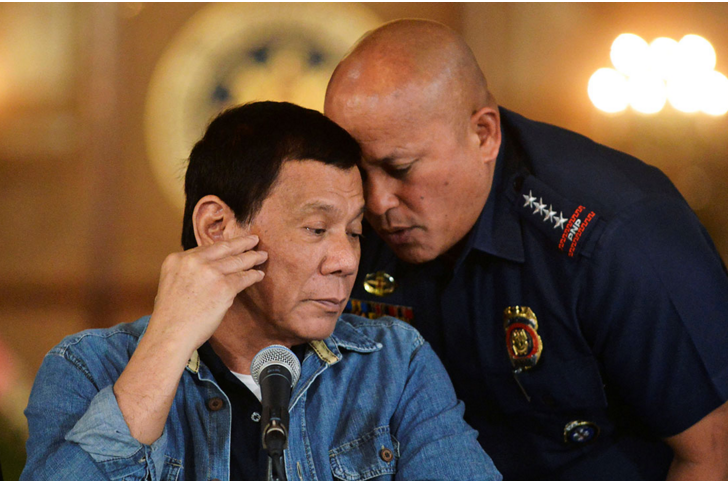
At least five Davao Boys have public Facebook accounts that provide many personal details – although some of them, in an apparent attempt to obscure their identities, spell their names backwards. Charles Molinos, for example, confirmed that he is Selrahc Sonilom.
On 5 July 2016, eight police officers were reassigned from Police Regional Office 11 – that is, the Davao region – to Metro Manila, which includes Quezon City, “by command of Police Director Dela Rosa,” according to a photo of the transfer order that Molinos posted on Facebook.
Molinos’ comment next to the photo reads, “Change is coming” – Duterte’s campaign slogan. Molinos also posted a photo of a boarding pass for a July 4 flight to Manila. “Bye Davao see you soon,” he wrote.
With the transfer from Davao to Quezon City, on the main Philippine island Luzon, Patay spoke and acted as if he and his men were entering enemy territory. Davao cops don’t take drug money, Patay told Reuters, but in Luzon “even (police) generals are corrupt.” He did not elaborate.
Before the transfer, Patay said he gave his team a pep talk. “We will be going to Manila. We are a team,” he told them. “We should not be corrupted there … We will pray to God that we can resist temptations.” In Manila, Patay housed the Davao Boys in a makeshift barracks on the top floor of Station 6 and made sure they only fraternized with other officers, not with members of the public.
Ronnick de Ocampo, a member of Station 6’s drug squad – but not a Davao Boy – said Patay’s men were in their late thirties or early forties and called each other “bro” or its Filipino equivalent, “tol.” De Ocampo wouldn’t tell Reuters their names, and became agitated and changed the subject when pressed further about them.
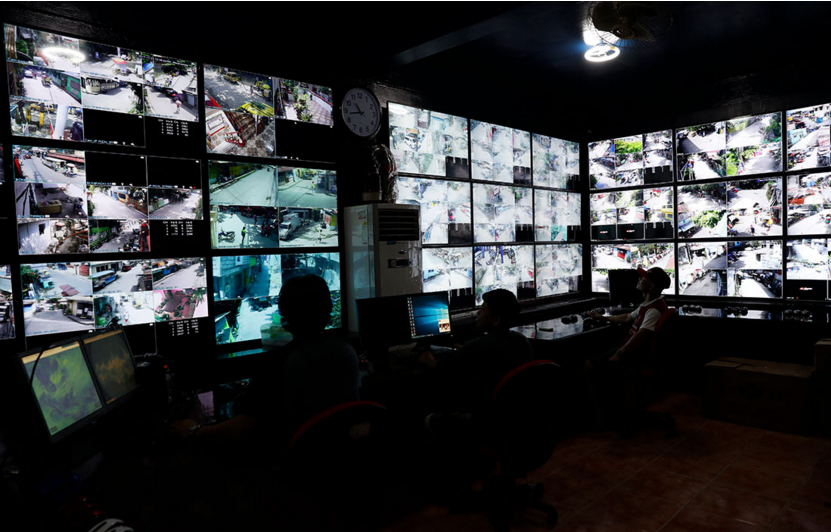
Patay’s men were a breed apart. They wore bullet-proof vests even when they went out to buy cigarettes, said Reynaldo Esteban, an officer with the station’s community relations team. Esteban said part of Patay’s morning routine was doing dry-fire practice – that is, shooting with an unloaded gun – on the rooftop. “He loves his .45 caliber gun,” he said.
The Davao Boys remained aloof, but their purpose and resolve to wage the drug war were clear to Esteban, who works on drug-awareness campaigns. He said of Patay’s men: “We are the prevention. They are the cure.”
He added nervously: “Joke!”
THE DRUG SQUAD
The crime data analyzed by Reuters contains the names of 78 officers associated with drug-war killings at Station 6, including Patay and the Davao Boys. Some of these officers may not have been directly involved in killing suspects. They might have guarded perimeters, or posed as drug buyers during undercover operations known as “buy-busts,” police officers told Reuters. At least one third of the reports do not include a full list of officers involved in the operation.
Patay said he ordered his Davao team to lead the buy-bust raids, but also mobilized all Station 6 officers to help secure the perimeter during operations in “very dangerous” areas. “We are not super cops,” he said.
Officer de Ocampo said the drug squad had 30 operatives, including the undercover cops who posed as buyers and the heavily armed officers – such as the Davao Boys – who backed them up. The squad was usually assembled by text messages or through Facebook messenger, he said, and its members were expected to be able to report to the station in 15 to 20 minutes.
A Philippine police commander told Reuters in February that buy-busts are actually well-planned executions. Dealers can easily spot undercover cops and won’t sell drugs to them, said the commander. Instead, police operatives executed their targets, who were usually unarmed, then planted guns and drugs to justify the use of deadly force, he said.
Patay said his officers only open fire in self-defense. Before each operation, he said, he prayed with his men. They prayed for their own protection, he said, but also “for the safety of our targets, for the safety of the community.”
Metho Andres, the police chaplain at Station 6 who prayed with the officers, told Reuters that the Bible justified the killing. Quoting Romans 13, he said Duterte was a God-appointed “agent of wrath” whom police should obey without question. He blamed drug users for their own deaths.
“That’s a consequence of them disobeying,” said the pastor. “There is wrath coming for those who don’t obey.”
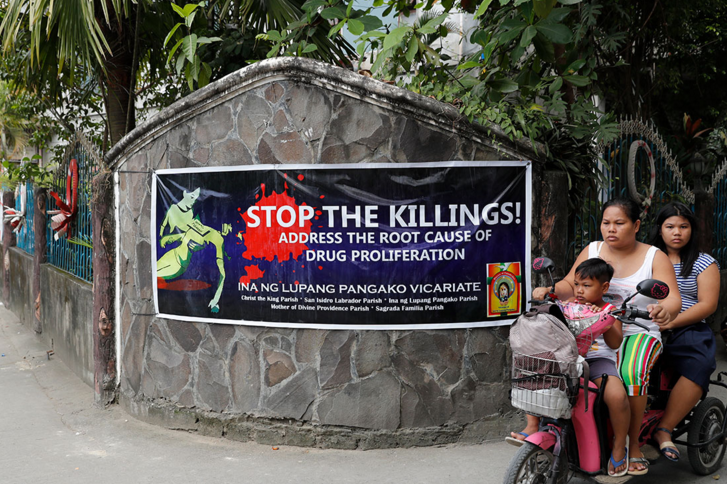
Also among the men transferred from Davao to Manila was Richard Timon.
At Station 6, Timon would participate in police operations in which at least 60 people were killed, the police crime reports show. Five other Davao Boys were associated with the deaths of at least 50 people: Molinos; Michael Maderable; Ronie Banggat; Jun Ralph Piñero; and Emmanuel Ibit. Two others, Renante Solomon and Dennis Pal, would be involved in operations in which at least two dozen were killed.
Patay and two of his superiors declined to let Reuters interview the Davao Boys. One Davao Boy, Dennis Pal, did agree to be interviewed but then abruptly cancelled and told Reuters to contact his superiors. Maderable, Ibit and Solomon did not reply to messages sent to them on Facebook. Reuters could not locate Banggat, Timon and Pinero.
Only Charles Owen Molinos agreed to speak to Reuters. Molinos, who trained as a SWAT officer in Davao, has little sympathy for the drug suspects he was brought to Quezon City to combat. “They destroyed a lot of people,” he said. “So this is the time that they suffer the consequences.”
Molinos was involved in operations that claimed at least 56 lives, according to crime data analyzed by Reuters. At first, he denied killing anyone in Quezon City. Then he said he had. When asked how many, he replied: “Zero.” Asked later about the tally of 56, he did not respond.
Among the victims was Kathrina Polo’s husband.
By the time the Davao Boys entered her neighborhood just after midnight on Aug. 15, 2016, carrying assault rifles and wearing what Polo described as “full battle gear,” Station 6’s drug squad had killed eight people in six operations, according to the crime data.
That night, the squad added another five kills: Polo’s husband, Cherwen, three of his drinking companions and a neighbor. Cherwen had been celebrating his 39th birthday.
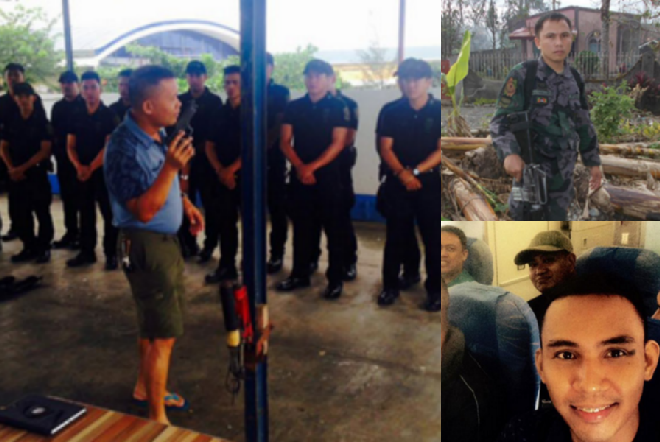
When police entered the house, said Kathrina, she was in a backroom and Cherwen was upstairs with his friends, sleeping off the booze. She heard footsteps going upstairs and then six gunshots.
She said she emerged from the backroom to find at least five police in the house. “Sir, don’t shoot because there are children here!” she begged them. An officer with a Visayan accent ordered Kathrina and her two children outside, she said. As they left, she heard more gunshots.
The operation was a legitimate buy-bust, the police said in a report on the incident. When Cherwen Polo realized he was selling drugs to an undercover officer, the report said, he and his companions drew weapons and opened fire. The officers had “no other option but to retaliate,” said Patay in a separate statement.
Police said a gun battle then erupted in which they killed the five men and injured a sixth. According to a police autopsy, bullets went through Cherwen Polo’s head, heart and forearm. There were no reports of any police injuries. Patay and police authorities did not reply to Reuters’ questions about the incident.
The police didn’t wear masks, said Polo. Asked if she would recognize the men if she saw them again, she replied without hesitation: “Yes.”
Reuters showed Polo photos of the Davao Boys from Molinos’ Facebook page, and she pointed to a man she recognized: Michael Maderable. Maderable is listed on the police report as one of the officers who participated in the operation.
His name also appears on the July 2016 transfer order. A Facebook account with Maderable’s name and photo says he is from Tagum City, where Patay was police chief before assuming command of Station 6. According to the crime data, Maderable was involved in operations that killed at least 55 people in the first year of the drug war. Reuters could not reach Maderable for comment. Senior officers declined to make him available.
Molinos and Maderable were among five Davao Boys involved in Station 6’s deadliest operation – which was also the deadliest police operation in all of Quezon City in the first year of the drug war.
In September 2016, police entered the Old Balara barangay around midnight and shot seven drug suspects in what they said was self-defense. Police said that afterwards, in a bid to save lives, they rushed their victims to hospital, where they were declared dead on arrival.
A Reuters investigation in June found that police were using hospitals to hide drug war killings. Most of the seven men had been shot in the head and chest, said the doctor who declared them dead on arrival. The police deny any cover-up took place.
“Feeling proud at QCPD Police Station 6,” Molinos posted on Facebook five days later. “We’ve contributed a lot here already,” he wrote.
BUSINESS AS USUAL
In 2017, Station 6’s kill rate began to drop, the records show. From July to December 2016, the first six months of the drug war, 87 people were killed. In the next six months, only 21 were killed. This made sense to Patay. He said his station’s “first salvo” had frightened drug suspects, making them less likely to fight back.
But there were other forces at work. In January, the country learned that drug squad officers had abducted and killed a South Korean businessman at national police headquarters in Manila. The killing fueled growing public opposition to the police and their brutal methods.
Duterte halted police anti-drug operations for most of February and vowed to dismantle the units. “Looks like (it means) coming home for us because all drug units were abolished,” commented Dennis Pal, one of the Davao Boys, on Facebook on Jan. 29.
But they weren’t dismantled. They were rebranded by the police. “Anti-illegal drug units” became “drug enforcement units.” The Davao Boys stayed put – and Molinos appeared on Facebook wearing a t-shirt with the new name, featuring a skull with red eyes and a grotesquely elongated jaw.
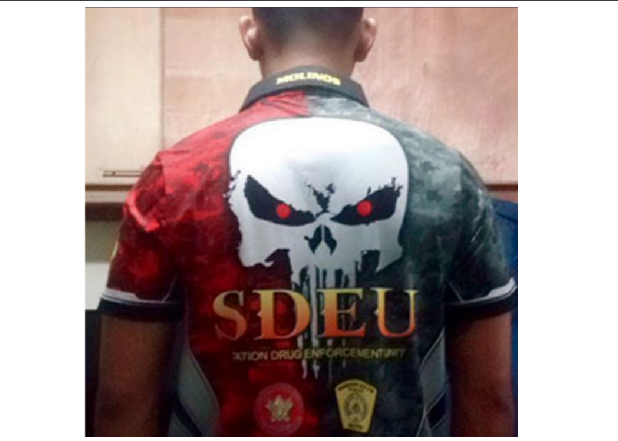
On Feb. 28, Duterte ordered police to resume operations, and the number of killings by Station 6 continued to climb. Eight Davao Boys took part in an operation that killed Bernabe Sabangan, 23, and his friend in May 2017. Police recorded it as a buy-bust.
Mariel Sabangan told Reuters that her brother had been cooking and watching television when Patay’s men burst in and handcuffed him. Mariel said she pleaded with them to let him go, but they bundled her and her husband outside. A minute later, she heard three gunshots. “I was already crying. I was going wild because I knew what that meant,” she said.
Afterwards, she said, the police stayed to play basketball outside her house for another half hour or so, before taking the bodies of her brother and his friend to hospital where they were pronounced dead on arrival. The officers drank her dead brother’s coffee and stole jewelry, cell phones, children’s piggy banks and a motorcycle, she said.
When Reuters showed Mariel pictures from Molinos’ Facebook page, she said: “My heart beats fast.” She recognized three men, including Molinos, who she said had been dressed in “battle gear.” Molinos and another man had Visayan accents – “same (as) the president” – and Molinos put a gun to her husband’s neck as he shoved him outside, she said. The police crime report names Molinos as one of the officers who participated in the operation.
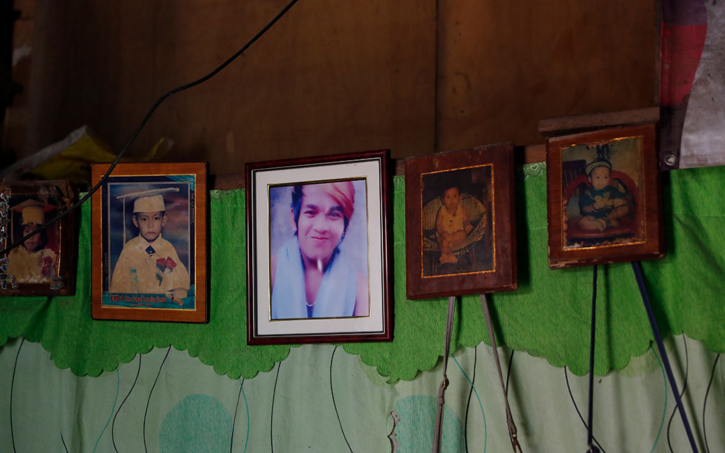
Mariel says she now has trouble sleeping. “It’s like I’m going out of my mind,” she said. “I feel like the police could come back anytime.”
Patay and Molinos did not respond to Reuters’ requests for comment about the episode.
“THEY DESERVE TO DIE”
Patay expected total obedience and transparency from his men. “All your operations I have to know, because I should always guide,” he said he told them. Patay also had orders to follow. He stressed that at Station 6 he was not implementing “my own policies” but those of the government and police leadership.
Patay said local politicians – known as barangay captains – had too long been afraid to set foot in some areas. He told Reuters he turned the tables on them with a message: “This is not the time to be afraid of the criminals. This is the right time that the criminals will be frightened of us.”
Patay’s methods drew a conflicted response from the barangay captains. “The killings were back-to-back when Patay was chief,” recalled Crisell Beltran, the captain of Bagong Silangan district, where Bernabe Sabangan was killed.
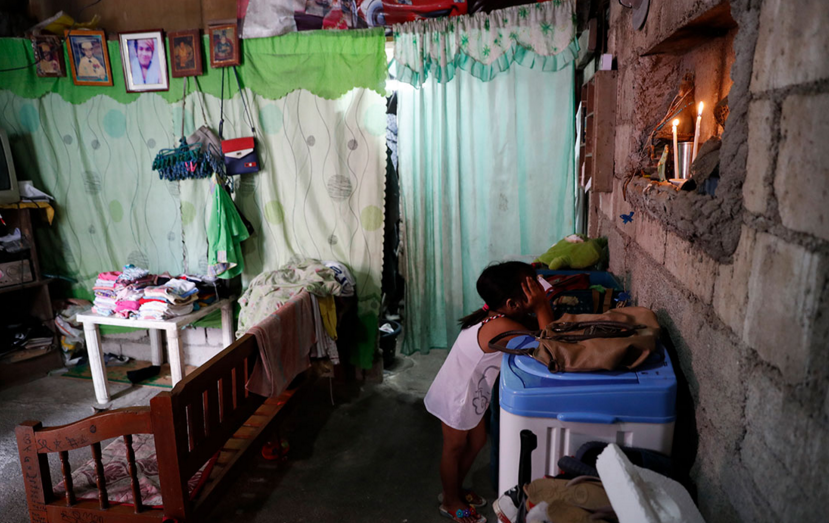
She described this as “positive, negative.” The killings made some neighborhoods more peaceful, she said. “The negative, of course, was that people died.”
Beltran said Station 6 never informed her before launching what she called “special operations.” The barangay was only called afterwards, to ferry away dead or wounded suspects, she said. Beltran said on Oct. 8 she couldn’t recall a single police killing in her district since Patay was transferred out in September. Patay and police authorities did not reply to a request for comment.
The captain of the neighboring Commonwealth barangay, Manuel Co, said he was always forewarned about Station 6’s operations. He said he even joined some of them, carrying the assault rifle that sat behind his desk when Reuters interviewed him.
“Those son of a bitch drug pushers shouldn’t have human rights,” said Co. “They deserve to die.” Even so, Patay was “pro-life,” Co said. “He doesn’t want anyone to die. The only reason people die is because they fight back.”
Co credited the drug war for a dramatic drop in crime in his barangay. The data tell a more ambiguous story. For all of the blood – Station 6 had a third more drug-related killings than any other station in Quezon City in the first year – there was limited impact on crime.
From July 2015 to June 2016 – the year before Duterte launched his campaign – Station 6 recorded 1,129 major crimes, including murders, rapes and robberies. In the drug war’s first year, it recorded 931 major crimes, a drop of 18 percent, according to crime reports.
But the proportion of major crimes committed in Station 6’s area relative to all of Quezon City increased from 12 percent to 15 percent. In other words, Station 6’s area grew more dangerous when compared with other parts of Quezon City.
Patay is now a regional commander with an elite unit that investigates high-profile crimes, the Criminal Investigation and Detection Group. The CIDG answers directly to police chief Dela Rosa.
Patay spoke to Reuters in October at the CIDG bureau in San Fernando City, about a two-hour drive north of Manila. The shelf behind his desk held trophies from recent shooting contests. He said he had used prize money to buy his men body armor.
Patay said he was waiting to reunite with the Davao Boys at CIDG. When they moved with him to Manila, he said, they had one request: to join him on his next posting and “not be left behind.” They were now awaiting their formal transfer, he said.
For now, the men who led Quezon City’s deadliest drug squad are in limbo. According to Molinos, the squad was living in a property in Pasong Tamo, a barangay in Quezon City. He wouldn’t say exactly where.
“A safe house,” Molinos smiled. “For Davao Boys only.”




